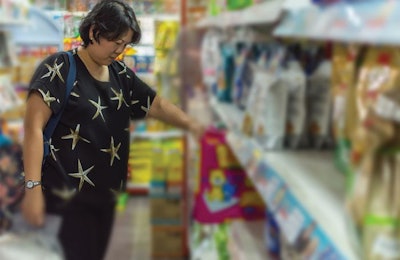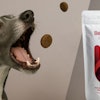
Consumers around the world balance buying premium items with hunting for bargains, research shows, and that seems to apply to pet food, too, based on surveys of US pet owners.
According to a global consumer survey conducted by Euromonitor International in 2017, people in many countries seem to make conscious trade-offs to purchase fewer things, but those items are higher quality and often more expensive. The data shows this behavior is especially prevalent in some emerging markets in Asia and Latin America, where people tend to be even more connected to online purchasing.
But at the same time, this focus on quality over quantity can’t always compete with the allure of a good bargain. More than one-third of global consumers surveyed by Euromonitor said they enjoy browsing in stores and malls, even when they don’t particularly need anything, and about one-fourth report frequent impulse purchases.
Pet food consumers also show "strategic retail behavior"
US consumers surveyed by Euromonitor definitely favor bargain hunting over buying fewer, higher-quality things, almost two to one. The same is true in many other countries listed in Euromonitor’s report, both developed and developing.
Similarly, in many developed pet food markets like the US, premiumization tends to rule — and that trend is starting to show up in developing markets, too. Yet 34 percent of US pet owners surveyed by Packaged Facts said they’re spending less on pet products because of the economy. That percentage is down a little from what it measured post-recession but has remained fairly constant despite a stronger economy today.
“For pet owners, as with US consumers in general, economizing often involves strategic retail behavior including trading down across channels and brands, shopping multiple channels for bargains and increased usage of coupons and private labels, all of which serve to suppress overall retail dollar performance,” said Packaged Facts’ report, “Pet Food in the US, 13th Edition,” released in December 2017.
Both dog and cat food buyers tend to purchase average-priced products, the report said, and the majority of US pet owners surveyed by Packaged Facts said they spent less than US$50 on their pets in the previous month. This, despite the fact that growth in premium pet food products is driving the overall growth in the US market, which Packaged Facts reported at 4.4 percent for 2017.
Help with cooking — for people and pets
Another trend is the growing popularity and use of meal kits among consumers who perceive health and nutritional benefits to cooking at home but don’t have the time or confidence to cook from scratch. This is especially true among younger consumers, according to Euromonitor’s survey, which showed that 26 percent of global consumers under the age of 25 reported spending less than 15 minutes preparing dinner, while 48 percent have used a subscription meal service. And among those, 19 percent have tried a meal preparation kit.
We see parallels in pet food here, too. Some pet owners want to take a more hands-on, personal approach to feeding their pets but recognize they need help (fortunately, considering many homemade pet diets have been shown to be deficient in key essential nutrients) and turn to products like toppers, mixers and sauces. A December 2016 Packaged Facts consumer survey revealed that 28 percent of US dog owners and 22 percent of cat owners use commercial pet food toppers, mix-ins or gravy/sauce products.
Further, data from GfK on the US pet specialty channel reported on PetBusiness.com showed that pet meal enhancers tripled their shelf space over the past three years and increased more than 10 times in sales (US$3.5 million to US$27.8 million). This trend may also help explain the growing popularity and sales of raw and freeze-dried or dehydrated pet foods, which often involve some level of preparation on the owner’s part.
Home delivery of pet food is on the rise, too, with Packaged Facts reporting that 19 percent of US dog owners and 20 percent of US cat owners had dog or cat food delivered regularly to their homes in 2017.

















